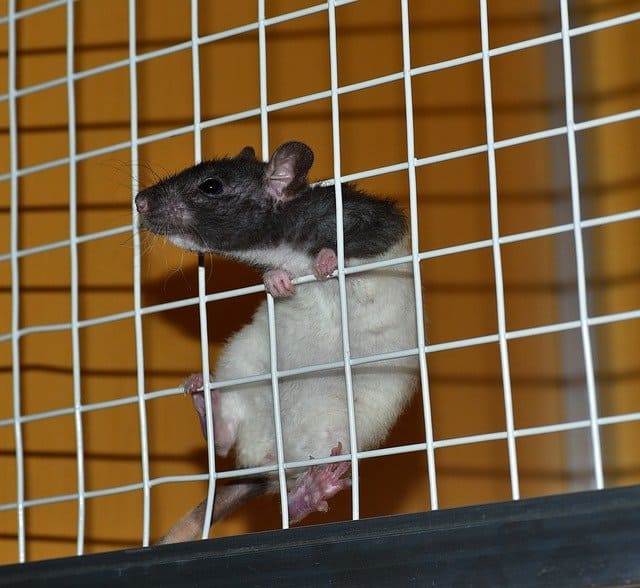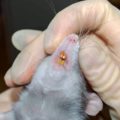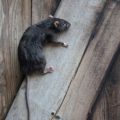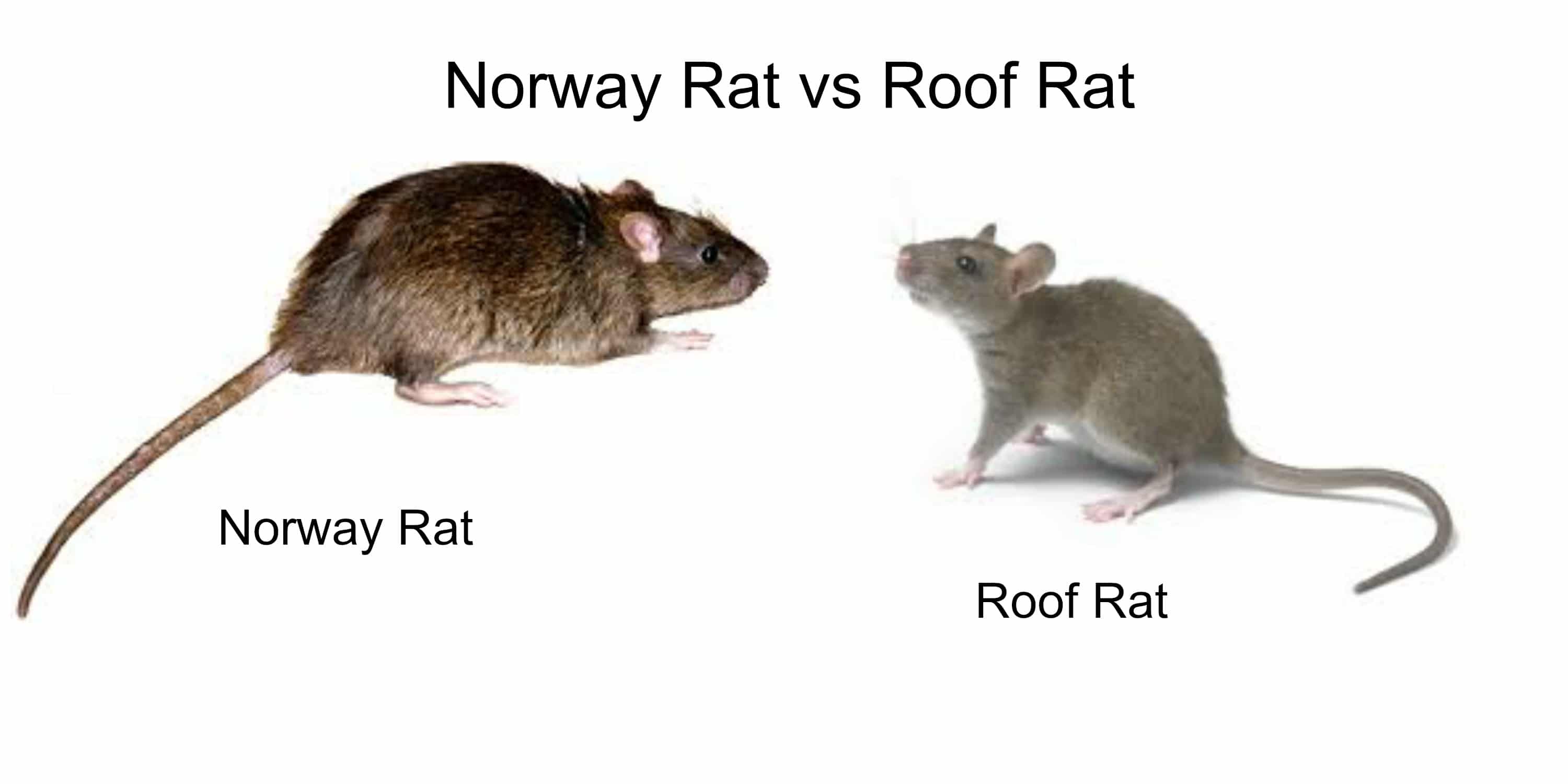Table of Contents
Of all the species of animals on the planet, rats can be said to be among the most adept, hardy, and resourceful of them all. Rats are known for their ability to avoid being detected while managing to consume food that would turn the stomachs of other animals. And, rats are infamous for ‘carving’ their way through their environment using their massive, tough-as-nails front teeth.
It’s reasonable to presume that rats could be capable of chewing through cardboard, wood, or even drywall. But, what about metal and concrete? Are rats dentally equipped to chew through substances that are technically harder than teeth themselves?

In this article, we’ll be discussing the answer to this question while giving you a few things to consider if you find yourself up against a rat problem.
Metal and Concrete: Has the Rat Met Its Match?
Now, it’s time to answer the question: “Can rats chew through metal and concrete?”
The answer is yes and yes, but with some qualifications.
Are Rats Heavy Metal Fans?
Let’s start with metal. It’s been shown that rats can easily chew through softer metals like lead, tin, and aluminum—in fact, it’s no problem at all for a rat to chew right through a soda can. It’s for this reason that rat traps are composed mostly of hardened steel. Steel has a much higher durometer, making it more difficult for the rat’s teeth to bore through.
However, it’s been discovered that some especially strong rats can literally chew right through steel, releasing themselves from cages composed out of it. In some cases, rats can chew right through steel piping, although this is made easier when corrosion has weakened the material beforehand.
A Not-So-Concrete Answer
So, what about concrete? Can a rat chew through a concrete subfloor or other foundational firmament?
The answer is that it depends. Concrete that has been weakened over time can crumble easily, making it more manageable for a rat to chew through it. However, solid concrete that has been treated to an acid wash finish will be a problem for most rats to chew through. Smooth, hard concrete surfaces that aren’t cracking or crumbling are generally considered to be impervious to rats.
What about stone or ceramics? In the case of stone, most rats won’t be able to chew through it. This doesn’t apply to softer, more malleable stone like clayware, alabaster, or soapstone. Harder stony material like granite or quartz will definitely be a problem for rats to chew through.
In the case of ceramics, you might as well just assume that the rat can chew right through it. Even though ceramic is smooth to the touch, it’s also very brittle. Brittle substances are no match for the powerful jaws and teeth of a determined rat.
The Anatomy of a Rat’s Mouth
To really appreciate just how efficient rats are at chewing and grinding, it helps to understand how their mouthparts develop and what contributes to their chewing power.
In humans, the muscles that control the jaw are anchored below the ears. This gives us just the right amount of leverage needed to chew food and speak effectively. In the case of the rat, however, the muscles used to control the jaw are anchored around the eye sockets. This unique feature gives the rat unprecedented chewing force, as there’s a lot more leverage for the teeth to move up and down and from side to side.
Fun fact: when a rat grinds its teeth, its eyes can vibrate in and out. This unique feature makes many rats seem like their eyes are literally boggling!
The Power of Ever-Growing Teeth
Rats have what are called Monophyodont teeth. This term is used to describe teeth that only grow once throughout the animals life, as opposed to human teeth which begin as ‘baby’ teeth only to be forced out by permanent, ‘adult’ teeth.
The monophyodont teeth within a rats mouth never stop growing. In fact, rats that are kept as pets can develop problems with their teeth growing too long and causing issues during eating. If a rat’s teeth are not kept trim by naturally gnawing on environmental substances, they’ll just keep growing. It’s for this reason that pet rat owners often need to ‘trim’ the rat’s teeth in order to keep it healthy.
In the wild, rats have an instinctual urge to chew on hard substances. This natural behavior accomplishes two key goals that help the rat live a longer, more successful life:
Chewing on hard substances keeps the teeth sharp. Think of a rat’s incisors as operating similar to a pair of shears. Over time, constant use of the ‘blades’ will require sharpening. Just like you might take a whetstone to a pair of shears to sharpen them, a rat takes to chewing on hard substances to keep their teeth sharp.
Chewing on hard substances keeps the teeth short. It is not advantageous for the rat to have especially long teeth. Because the teeth keep growing, the rat must continue to ‘file them down’, lest they grow to a length that becomes prohibitive for eating.
Unlike humans, rats do not have canine, bicuspid, or premolar teeth. Instead, they have one set of upper and lower incisors (located at the front of the mouth), and one set of upper and lower molars, primarily used for grinding.
Conclusion
In this article, we’ve shown that rats use their powerful mouthparts to make mincemeat out of some of the hardest materials in their environment: wood, some rocks, and even softer metals. However, any harder metal thicker than about two millimeters will pose a problem for most rats.
Even concrete isn’t entirely safe from a determined rat colony. Weaker concrete that hasn’t been maintained can crumble easily, making it prone to damage from rat chewing. But, solid, treated concrete does very well in the defense against rat boring.
Having a good understanding of exactly what rats can and can’t chew through will help you develop a strategy to control virtually any rat problem. If you can, steer clear of using soft plastics, wood, or cardboard in the construction of rat traps, and use the other resources found on this page to learn more about controlling your individual rat problem.





